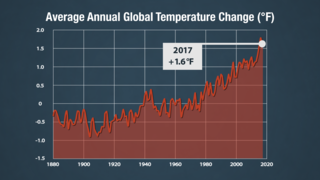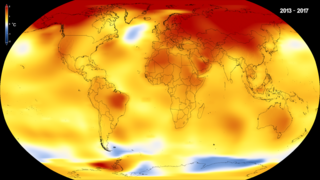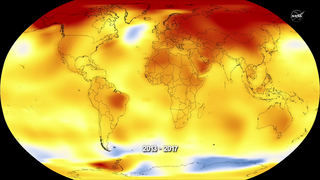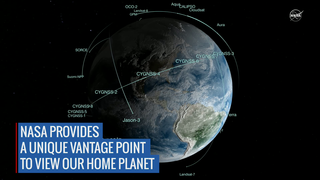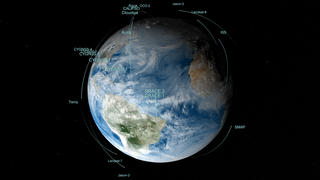The Numbers Are In: Where Does 2017 Rank for Global Temperatures? Live Shots 1.18.18
NASA Scientists Available January 19th To Share Latest With Your Viewers
In many parts of the United States, 2017 was a year of extremes: deadly hurricanes, devastating flooding and wildfires but also record-breaking Arctic temperatures across much of the country and surprising snowfall in areas of the country that don’t usually see much of the white, fluffy stuff. New York City experienced its coldest New Year’s Eve in 55 years, and Los Angeles hosted the hottest World Series game ever. But where does 2017 rank globally in the temperature record books?
Join NASA scientists from 6:00 a.m. – 11:30 a.m. EST on Friday, Jan. 19 to find out where 2017 global temperatures rank, and find out how NASA uses its unique vantage point from space to track how the Earth is responding to a warming climate.
Despite year-to-year changes, average temperatures around the globe remain on a steady, long-term upward trend. In fact, 17 of the 18 warmest years on record have occurred since 2001. NASA scientists will break down where 2017 stands in the record books, and what role warmer temperatures may have played in the extreme events that the U.S. experienced last year.
HD Satellite Coordinates for G17-K18/Upper: Galaxy 17 Ku-band Xp 18 Slot Upper| 91.0 ° W Longitude | DL 12069.0 MHz | Vertical Polarity | QPSK/DVB-S | FEC 3/4 | SR 13.235 Mbps | DR 18.2954 MHz | HD 720p | Format MPEG2 | Chroma Level 4:2:0 | Audio Embedded
*****To book a window contact****
Michelle Handleman / Michelle.z.handleman@nasa.gov / 301-286-0918
Suggested Questions:
1. NASA just released data about 2017. Tell us where 2017 ranks among the warmest years on record?
2. December was unusually cold for much of the U.S. How does that compare to what we saw elsewhere around the world last month?
3. Last year was a wild year for weather in the United States/our area. How does what we saw overall in the U.S. in 2017 relate to the broader global picture?
4. What are some of the other effects we’re seeing as temperatures rise?
5. Where can we learn more?
Questions For Longer Interviews:
1. What is an El Niño and what part has this weather pattern played in global temperatures in recent years?
2. How might shifting patterns of El Niño to a possible La Nina impact us this year?
3. What is driving our planet’s long term warming trend?
4. One or two degree temperature increases don’t sound like much. Why is this significant?
5. NASA has a global perspective here on Earth and in space. How do NASA’s observations from space help us understand the changing climate?
Live Shot Details:
Location: NASA’s Goddard Space Flight Center/Greenbelt, Maryland
Scientists:
Dr. Doug Morton / NASA Scientist (English and Portuguese)
Dr. Lesley Ott / NASA Scientist
Dr. Eric Brown De Colstoun / NASA Scientist (en Español)
Related
Credits
Matthew R. Radcliff (USRA): Lead Producer
Michael Randazzo (Advocates in Manpower Management, Inc.): Lead Editor
Pat Kennedy (KBR Wyle Services, LLC): Director
John Caldwell (Advocates in Manpower Management, Inc.): Technical Director
Michael Randazzo (Advocates in Manpower Management, Inc.): Graphics
Stuart A. Snodgrass (KBR Wyle Services, LLC): Videographer
Rob Andreoli (Advocates in Manpower Management, Inc.): Audio Technician
Rich Melnick (KBR Wyle Services, LLC): Support
NASA's Goddard Space Flight Center
https://svs.gsfc.nasa.gov/12824
Keywords:
SVS >> HDTV
NASA Science >> Earth
